Vicki M. Taylor's Blog
May 20, 2016
Mental Health Series - Using a Coping Box
 I don't like using medication like an anti-anxiety pill to help me through an upsetting episode like an anxiety attack, panic attack, depression cycle, or even a manic episode. Sometimes, I'd much rather find other ways to cope. So, through trial and error, I've come up with a solution. I call it my "Coping Box" and I've filled it with items that are specific to me that will help keep me calm, distracted, and hopeful.
I don't like using medication like an anti-anxiety pill to help me through an upsetting episode like an anxiety attack, panic attack, depression cycle, or even a manic episode. Sometimes, I'd much rather find other ways to cope. So, through trial and error, I've come up with a solution. I call it my "Coping Box" and I've filled it with items that are specific to me that will help keep me calm, distracted, and hopeful.If you think hard about your episodes and what you can do for your own personal mental health, you might find that there are some similar items you could put in your Coping Box.
 I used a 32 quart storage container for my box. And, for fun, I put sticky letters on the outside, spelling "Coping Box" to give it some legitimacy.
I used a 32 quart storage container for my box. And, for fun, I put sticky letters on the outside, spelling "Coping Box" to give it some legitimacy.Then, I thought about what would comfort me and help distract me during any type of episode.

I like to read magazines about gardens, landscaping, household tips, storage space, and the like, so I included some magazines. You can always rotate out any you've read and put in others that you'd like to read.
So, here is a list of what is in my Coping Box.
MagazinesWord Search or other Word Puzzle BooksJournalBibleInspirational BooksBubblesSnacksStress BallTissuesWellness Recovery Action Plan (WRAP)Pens, Pencils, Highlighters, Sticky NotesBookmarksColoring BooksDevotional BooksCrayonsColored PencilsAffirmations"Taming Your Gremlin" by Rick CarsonA distracting fiction book
This is the progression of adding each of the items.
 I chose a couple of different Word Puzzle books. I like the Word Search Puzzles best.
I chose a couple of different Word Puzzle books. I like the Word Search Puzzles best. I put in a journal that I usually take to the hospital if I'm hospitalized for any length of time due to a major episode. It helps me keep track of my thoughts during the episode, the treatment, and after.
I put in a journal that I usually take to the hospital if I'm hospitalized for any length of time due to a major episode. It helps me keep track of my thoughts during the episode, the treatment, and after. This is the Bible I chose, because it's a Study Bible. I enjoy doing research and learning more than just the scriptures.
This is the Bible I chose, because it's a Study Bible. I enjoy doing research and learning more than just the scriptures. I threw in a variety of inspirational, devotional, and helpful books that will encourage me and distract me.
I threw in a variety of inspirational, devotional, and helpful books that will encourage me and distract me. You have to make your fun any way you can, and for me, the most basic way is by blowing bubbles. You can't be sad and crying if you're blowing bubbles, right?
You have to make your fun any way you can, and for me, the most basic way is by blowing bubbles. You can't be sad and crying if you're blowing bubbles, right? I put in some snack bars. You can choose anything that is your favorite and won't make a mess in the box.
I put in some snack bars. You can choose anything that is your favorite and won't make a mess in the box. A stress ball is a must for helping alleviate your physical reactions by channeling all your energy into squeezing the heck out of this little ball.
A stress ball is a must for helping alleviate your physical reactions by channeling all your energy into squeezing the heck out of this little ball. Yes, I know, at some point or another, crying is going to happen. That's why I put in a fresh pack of tissues.
Yes, I know, at some point or another, crying is going to happen. That's why I put in a fresh pack of tissues.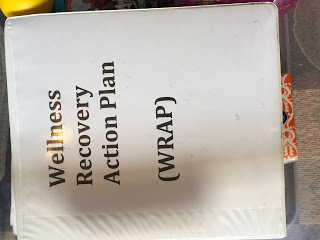
The Wellness Recovery Action Plan was introduced to me through an Internet search and happening upon Mary Ellen Copeland's website.
According to the WRAP website,
"The Wellness Recovery Action Plan® or WRAP®, is a self-designed prevention and wellness process that anyone can use to get well, stay well and make their life the way they want it to be. It was developed in 1997 by a group of people who were searching for ways to overcome their own mental health issues and move on to fulfilling their life dreams and goals. It is now used extensively by people in all kinds of circumstances, and by health care and mental health systems all over the world to address all kinds of physical, mental health and life issues. WRAP has been studied extensively in rigorous research projects and is listed in the National Registry of Evidence-based Programs and Practices." I am a firm believer in the WRAP program. I've been using it since 2008. You must realize it's a living document. I review my WRAP after every hospitalization and during major episodes. As people come in and out of my life, or doctors and therapists, I make changes as well.Now that you've seen how I've created my "Coping Box", I'd like to see what you come up with when creating yours. Let me know by e-mail or in the comments section.
Copyright - Living Stone Faith. All Rights Reserved.
Published on May 20, 2016 14:13
May 10, 2016
Mental Health Series - Celebrating Mental Health Month with Ways to Stay Healthy
 Every year I write a blog post advocating Mental Health Month. This year, including my advocacy, I'm going to give you some information about the mental health benefits of eating yogurt and provide you with tips from Chobani.
Every year I write a blog post advocating Mental Health Month. This year, including my advocacy, I'm going to give you some information about the mental health benefits of eating yogurt and provide you with tips from Chobani.I've honestly never eaten Chobani yogurt before recently, and wanted to help spread the news about the benefits of eating yogurt. I also did some research on the Mental Health benefits of yogurt and I was surprised by the amount of positive results. Why don't you check out Chobani's products for more health snack options that can benefit your mental health as well.
After sampling a few of the different Chobani yogurts, I'm hooked. They're smooth, not bitter, don't have that "yogurt aftertaste", and are the perfect portion for an addition to your breakfast or as a snack any time of the day.
Starting with EmaxHealth, In a report published by BioEssays, researchers explain that probiotics play a role in producing, absorbing, and transporting neurochemicals (ie: serotonin, dopamine and nerve growth factor) which are essential for healthy brain and nerve function. Therefore, improving probiotic microflora in the intestines may be an important key to treating mental health conditions.
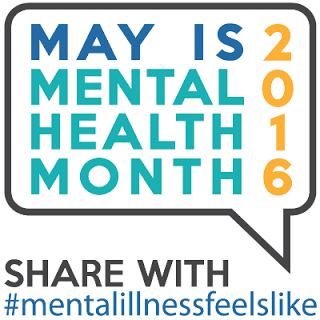 May, 2016 is the 67th year Mental Health America has observed Mental Health Month. They use many resources to spread the news and help others learn about helping themselves and others. They've created a calendar for the month helping you discover new ways to care for your mental health.
May, 2016 is the 67th year Mental Health America has observed Mental Health Month. They use many resources to spread the news and help others learn about helping themselves and others. They've created a calendar for the month helping you discover new ways to care for your mental health.This year, their theme is - Life with a Mental Illness. They're asking How does it feel to live with a mental illness? That (#mentalillnessfeelslike) is what we’re focusing on during Mental Health Month in 2016.
If you're a new reader, or long time reader of my blog, Living Stone Faith, you'll find I've written many posts about my experiences living with Bipolar, Anxiety, Panic Attacks, PTSD, OCD, and the various treatments, such as ECT.
What I'd like to know from you, is: How Does It Feel To Live With A Mental Illness?
Go ahead and post in the comments below or if you don't want to share publicly, you can always contact me via e-mail at vmtwriter@vickmtaylor.com
I try to provide you, my readers, with the latest information from other mental health sites and allow guest posts of others' experiences.
I did more research about the mental health benefits of yogurt and here are the results:
From Medical Daily:
According to a 2013 study that investigated the link between intestinal bacteria and mental health, not much is known about the ways that the gastrointestinal tract influences mood and behavioral disorders. The authors note that there was scientific interest in this link in the early 20th century, but there hasn't been much research until recently. One of those recent studies examined this link and found that people who took probiotics experienced lower levels of anxiety and depression, and had lower levels of cortisol — the stress hormone — in their saliva when they woke up in the morning.
For more Scientific information, I went to Scientific American. All I can say is, WOW. They aren't called "scientific" for nothing. They go into the scientific background and give amazingly complicated formulas and results. Please read them for yourself.
Dr. Mercola raises some interesting points and shows positive results of using Yogurt to help maintain a better mental health.
Here is only one of the tests/results he cited. Please visit his page for more in-depth details.
The featured proof-of-concept study, conducted by researchers at UCLA, found that probiotics (beneficial bacteria) actually altered participants' brain function. The study It's awesome to discover new ways to help us maintain mental health that doesn't include drugs or other more intensive treatments like, ECT.
Best of all, I found an independent blog about Chobani yogurt written by Trans Girl at the Cross, who gives a THUMBS UP, for Chobani and it's health benefits.
NewsMax points out FOUR Psychiatric benefits of eating yogurt.
1. A French study in 2011 found that subjects who took probiotics for 30 days had reduced levels of
2. Anxiety and depression may be relieved through probiotics, according to Dr. Joseph Mercola, an osteopathic physician and alternative medicine advocate. He reports that altered brain function from probiotics was revealed in a four-week study by researchers at UCLA.
Women in the study who ate yogurt had decreased activity in regions of the brain that control the processing of emotion and sensation when compared with control groups following magnetic resonance imaging, or MRI, scans. The scans were taken after they were shown images of frightened or angry faces.
3. Improved memory was found in men who took a daily capsule of probiotics for a month, according to a study conducted by researchers at the University College Cork in Ireland. The study also found the men reported less stress and anxiety, The Guardian reported.
The men’s stress levels and memories were tested when taking the probiotic capsules for a month and also when they took placebo for a month. Improvements in stress levels and memory were seen when taking the probiotics, according to Ted Dinan, the head of psychiatry at the college who led the study.
“When they were given these bacteria (probiotics) they were less anxious and their capacity to memorize material seemed to be enhanced,” Dinan told The Guardian.
4. Social anxiety may be relieved through probiotic-rich foods according to findings from a study of more than 700 students at the College of William and Mary, reported nutritionist and registered dietitian Cynthia Sass at Health.com.
From Mental Health America, they give you tips on how to help celebrate and spread the news.
How Can You Participate?Tag your Twitter and Instagram posts with #mentalillnessfeelslike; they will be collected and displayed at www.mentalhealthamerica.net/feelslike.Submit an anonymous post with images and/or text at www.mentalhealthamerica.net/feelslikeCheck out www.mentalhealthamerica.net/feelslike to see what other people are saying about how it feels to live with a mental illness.Share the www.mentalhealthamerica.net/feelslike page with your friends, family and other members of your social networks to help spread the word that mental health problems are real and common, and people do recover. Check out images we've created to help you share.Learn more about how common mental illnesses are, how people describe them, tips for tackling symptoms and the recovery process by checking out our info:Infographic: Life with AnxietyInfographic: Life with PsychosisInfographic: Life with DepressionInfographic: Life in RecoveryInfographic: Life with BipolarAs for me, I hope that I've been able to give you a unique perspective this year on Mental Health Month and new ways to help you be healthy.
Have a blessed day.
Vicki M Taylor
Copyright - Living Stone Faith. All Rights Reserved.
Published on May 10, 2016 10:31
April 12, 2016
Heads Up - Literally!
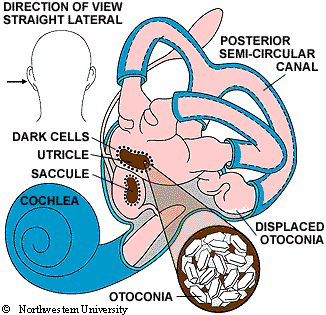 I've been having dizzy spells for about five months. It got so bad at one point, I passed out while walking on a sidewalk, woke to my husband leaning over me asking what happened. How was I supposed to know?
I've been having dizzy spells for about five months. It got so bad at one point, I passed out while walking on a sidewalk, woke to my husband leaning over me asking what happened. How was I supposed to know?He took me to the ER, they did a head CT, X-rays, and a multitude of other tests. I was sent to see other doctors and specialists, even a cardiologist, but no one could come up with an answer.
Most of the time, I'd get dizzy spells at random times, then when I'd bend over, or when I rolled onto my right side in bed. The dizzy spells were coming on more often. My head would get all confused and my eyes couldn't focus, and the room would spin around.
Finally, I went to see my ENT (Ear, Nose & Throat) specialist yesterday because of hearing issues. While I was there I talked to him about my dizzy issues. I was given a hearing test and then another test where I had to sit up, with my legs straight out, then the doctor would turn my head to the right and lay me backwards.
EVERY TIME he did this, the room would spin and I'd have an awful dizzy spell. He confirmed it with a couple more tests.
FINALLY! Someone knew what was happening and had a treatment program.
The diagnosis was BPPV: Benign Paroxysmal Positional Vertigo.
 The definition: Caused by loose particles (canaliths) in the balance portion of the inner ear which may have migrated to an area in which they are not normally found.
The definition: Caused by loose particles (canaliths) in the balance portion of the inner ear which may have migrated to an area in which they are not normally found.The treatment: It takes nine days to do this procedure. The first 48 hours keep your head completely vertical. Wear a soft cervical collar to ensure limited movement of the neck. For the first two nights sleep on your back at a 45 degree angle. (Good thing I have a Sleep Number bed!)
For the next seven nights, I'm not allowed to sleep on my right side. I can sleep on my back or my left side.
During those final seven days, I must avoid any upward or downward head movements and only move my head and body as a unit without any excessive turning of the neck. This is where the neck brace really helps.
Supposedly, after the nine day treatment, the dizziness should disappear, the canaliths should have moved back to their normal position, and I can go back to my normal routine.
I had NEVER heard of this before. But, after telling others, many, many people have responded with their own stories or of someone they knew. Some people were treated with medication but my doctor chose to treat me with this non-medication procedure as he thought it would work better.
Did you know?
BPPV may be made worse by any number of modifiers which may vary between individuals:
Changes in barometric pressure — patients may feel increased symptoms up to two days before rain or snowLack of sleep (required amounts of sleep may vary widely) Stress An episode of BPPV may be triggered by dehydration, such as that caused by diarrhea. For this reason, it commonly occurs in post-operative patients who have diarrhea induced by post-operative antibiotics.BPPV is one of the most common vestibular disorders in patients presenting with dizziness; migraine is implicated in idiopathic cases. Proposed mechanisms linking the two are genetic factors and vascular damage to the labyrinth.
John Hopkins Medicine has this to say about BPPV.
It's supposed to be one the most common types of vertigo:More than 200,000 US cases per yearTreatable by a medical professionalRequires a medical diagnosisLab tests or imaging rarely requiredShort-term: resolves within days to weeksSo, I'm going to give this treatment a try, and we'll see how it works out in nine days. Last night was horrible. I couldn't fall asleep on my back. I was up just staring at the ceiling most of the night. Good thing I had my iPhone close by, and could distract myself with games.If you've ever heard of BPPV, or know someone who has, I'd be interested in your stories.Have a blessed day.Vicki
Copyright - Living Stone Faith. All Rights Reserved.
Published on April 12, 2016 09:57
March 24, 2016
Mental Health Series - Journal Therapy
 Journal Therapy.
Journal Therapy.What comes to mind when you think of Journal Therapy?
Writing thoughts?
Personal information, private, don't share?
Coloring Books?
Drawing?
Painting?
Images of some sort?
Phrases, words, pictures?
All of the above, actually.
I have always kept a journal. Even as a child. Many of my earlier journals were destroyed when my parents moved while I was in Marine Corps bootcamp. They moved to a different house while I was away and when I returned, I had nothing of my own possessions left, from my school yearbooks, personal journals, pictures, my first teddy bear, to even my own room. My most sacred possession, my baptism bible and my cedar chest were gone, given to a younger sibling to use as a toy chest. It hurt.
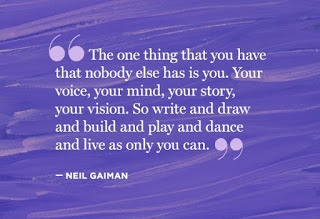
Seriously hurt.
I didn't journal for a long time. Then I started journaling again during my first marriage. Not realizing how paranoid and freaked out my first husband would get when he found out I was journaling, I should have kept them hidden better. Unfortunately, I didn't. He found them, read them, then burned them.
Again, I was immensely devastated. How could I ever trust anyone again? How could I ever put my personal feelings and thoughts to paper and expect them to be respected?
 It wasn't until I got my first personal computer that I started journaling again. This time, I kept my journal on my computer under a secured password. But, it just wasn't the same.
It wasn't until I got my first personal computer that I started journaling again. This time, I kept my journal on my computer under a secured password. But, it just wasn't the same.I like writing by hand when I put my personal thoughts in journal format. And, I needed paper journals, not electronic ones.
So, eventually, I moved from the computer journal to individual journal books. At today's count, there are several very large rubbermaid tubs filled with journals.
t was hesitant at first to try anything but dry mediums so I attempted the Sharpie markers first. And then moved on to colored pens, and finally colored pencils. I must admit, the colored pencils background is my favorite background. It brings out a subtleness that soothes me.
I wish all my pages were like that. I could take the time and create them if I wanted, no one is stopping me and I have a permission to create, right?
My last dry medium was doodling with crayons and that was just too much fun for anyone. I had a blast. Putting a lot of pressure on the paper, I got a darker result, backing off on the pressure, produced a lighter color. I was very enthusiastic about creating that background and would have done more, but had to reign myself in.
Finally, I moved on to watercolors. I tried using a sponge the first time, wanted to make a mottled effect. Which kinda worked as soon as I figured out the ratio of water to color. I used purple, which is one of my favorite colors. I moved on to my next favorite color, pink, and chose a brush for the next page and next technique. I noticed a much different stroke with the brush. I went over the page several times. Lightly at first, then with bolder strokes; the color getting pinker and darker as I covered the page. However, as most everyone else noticed, as the pages dried, the edges curled.
After the watercolor pages dried, I noticed the lines from the journal nearly disappeared, which was freeing in a way, it gave me a new found freedom to write anywhere on the page in whatever format I wanted.
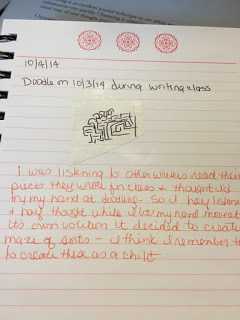
Which I did.
The page was softer, more receptive to the pen. On those pages that were not receptive to the pen, like the crayon doodle, I used stickers and such and created a collage of flowers and letters to create words that stimulated me.
Like “Dream” “hope”, “Inspire”, “believe”, “faith”, and “joy”. “Dream” is a word that I have all over my office in various formats.
I do like the dryer mediums better, only because I’m not as comfortable with the wetter mediums, which will have to come with practice.
 I wouldn’t rule anything out. I learned that if I gag the critic inside of me, I can be creative. If I gag and lock the critic in the closet and I can have fun being creative in a journal that I thought was only for words!
I wouldn’t rule anything out. I learned that if I gag the critic inside of me, I can be creative. If I gag and lock the critic in the closet and I can have fun being creative in a journal that I thought was only for words! 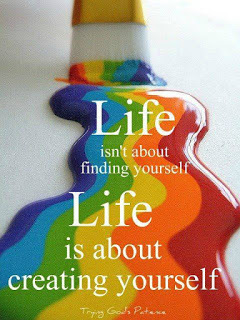 I now have several journals. Each with their own purpose. I have my general journal, which is my "go to" writing source for anything that is going on in my life.
I now have several journals. Each with their own purpose. I have my general journal, which is my "go to" writing source for anything that is going on in my life.I have a visual journal which I use to paste words, phrases, pictures cut from magazines, images and stickers from collections from arts and craft stores like Michaels. This is a fun and very relaxing way to keep your mind occupied and help reduce your stress and anxiety. I know it works for me.
I also have a prayer journal. This is a very important journal to me. I use it to write in prayers to God, asking Him for His guidance, support, help, comfort, and to to the same for those I know who are in need.
Then, I have this really unique journal I found in the clearance section at our local Super Target. It's titled, The Chuck it List - 1000 Things I'll NEVER do before I Die .
Did you know about the benefits of Journaling?
Benefits of Journaling
Medical studies show that writing about trauma or emotions helps people experience happiness, or an increase in health and productivity.
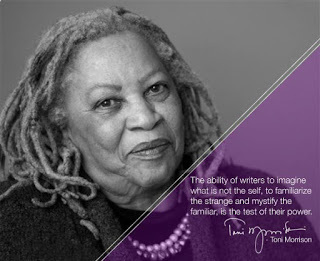 James Pennebaker, discovered that people who use writing to make sense of their traumatic life experiences feel happier and less anxious. Through his studies, Pennebaker found that those who made meaning out of their gained insight from writing were healthier than those who simply wrote the details of their day.
James Pennebaker, discovered that people who use writing to make sense of their traumatic life experiences feel happier and less anxious. Through his studies, Pennebaker found that those who made meaning out of their gained insight from writing were healthier than those who simply wrote the details of their day. Simply put: Words Heal. Founder and President of WRITECOVERY, Inc, Vicki M Taylor says, writing is a powerful tool for individuals who are struggling with the healing process.” She went on to say, “Words heal. Once you get the story out on paper, it’s out of your mind and you can move on.”
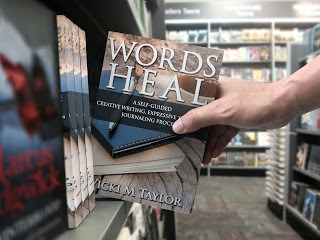
“Writing is a process,” says Stephen King. Although he meant it for fiction writing, he was never more right when it comes to journal writing. Writing is a process. It helps us understand what’s going on inside of us. It helps us sort out the emotions building up inside of us that threaten to blow. We have thoughts racing around in our mind, what do we do? We get out our journal and we write. And write. And write until the thoughts no longer run through our mind but race along the pages of our journal.
Journaling can have an overall healing affect on those with physical and mental illnesses. Doctors see it all the time. The patient uses the journal to track their illness, their symptoms, their thoughts and feelings about what they’re experiencing. Before long, they’re writing about how they’re coping, dreaming about what they’re going to do when they get well, and thinking about ways to help themselves improve their health.

If you desire, you can share your journal with your physician or mental health professional if you feel it might help your case. If not, don’t. It’s yours. It’s private. Don’t be pressured into exposing your private thoughts.
If you’ve never written in a journal before, it’s very easy. You don’t need a fancy journal or pen to start. A 3-ring binder, pen, pencil or even an online Microsoft Word or Text document is just fine to start.
Here is a simple start to journaling. Try writing first, then move on to more imaginative journals, like visual journaling, gratitude journaling, or even prayer journals.
Wait for a time when you have about 20 – 30 minutes of uninterrupted space. · Indoors or outdoors, it doesn’t matter.· Get comfortable.· Have a beverage close by.· You might want to start a ritual. Light a candle. Some Incense. Turn on soft music.
Open to a blank page. Identify the date. Some people like to identify the location as well. Then take a deep breath. Reach for your pen, set it to paper, and let your mind free.
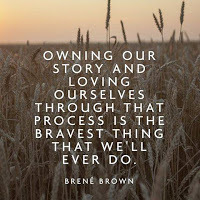 Journaling is a liberating experience. Journaling is a healing experience. You’ll find that you’ll live a healthier, more spiritual, and less negative life. Joy will replace passivity. You’ll gain a new perspective, change your negative thought patterns, and find a way to let your inner critic out onto the pages of your journal instead of running around in your head wreaking havoc.
Journaling is a liberating experience. Journaling is a healing experience. You’ll find that you’ll live a healthier, more spiritual, and less negative life. Joy will replace passivity. You’ll gain a new perspective, change your negative thought patterns, and find a way to let your inner critic out onto the pages of your journal instead of running around in your head wreaking havoc.What are you going to write about?
You are going to write about anything and everything. It’s your journal. It’s your private thoughts. It’s a “judge free” zone. It can be a laundry list. It can be a bucket list. It can be a letter to the neighbor down the street who always leaves their trashcans in the middle of the street.
My point is this: Whatever pops into your mind, can pop onto the pages of your journal.
Try it for a week. See how refreshing and freeing it becomes. Don’t try the whole 20-30 minutes at once. Try for a little five minute practice and see how it works for you. Then, try it again. And again.
I bet before long, you’ll have thoughts in your mind and you’ll be longing to reaching for your journal to get them out of your head.
My suggestion to you is start carrying your journal around with you during the day, so you can slip away for a few minutes to write a sentence or two.
You know you’re going to want to. It’s going to feel that good.
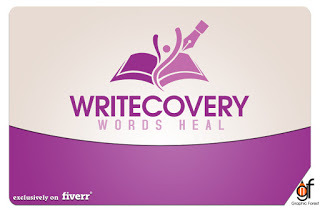 Words Heal.
Words Heal. Copyright - Living Stone Faith. All Rights Reserved.
Published on March 24, 2016 23:00
March 19, 2016
God is Testing My Faith and Patience
At least once in your life you've moved.
 Either, across the city, state, country, or continent. I've moved many times in my life. My last move was to the current house my husband and I have lived in for eighteen years. A long time. I thought this was our forever home. We are located in a older neighborhood with mature vegetation, trees, and the best thing is, if you ended up on our road, either you belonged there, or were lost. We live off a dead end, off a dead end, off a dead end. You couldn't try to find us if your life depended on it.
Either, across the city, state, country, or continent. I've moved many times in my life. My last move was to the current house my husband and I have lived in for eighteen years. A long time. I thought this was our forever home. We are located in a older neighborhood with mature vegetation, trees, and the best thing is, if you ended up on our road, either you belonged there, or were lost. We live off a dead end, off a dead end, off a dead end. You couldn't try to find us if your life depended on it.
 We love this neighborhood. There are nineteen houses on our road. We live near the dead end. I know everyone who lives in eachhouse. There is the older couple (in their 80's now) who were the first people to build on this road, and the man used to mow the grass on the dirt road. His daughter lives next door with her husband.Our neighbors are a collection of young and old. When we first moved in eighteen years ago, it was mostly families. But, just like our kids, the other kids grew up and moved away. Then we were a predominantly older generation of neighbors. Now, grandchildren are coming back, and as the oldest neighbors either pass on, or move to assisted living facilities, the houses are now being filled with young families again.
We love this neighborhood. There are nineteen houses on our road. We live near the dead end. I know everyone who lives in eachhouse. There is the older couple (in their 80's now) who were the first people to build on this road, and the man used to mow the grass on the dirt road. His daughter lives next door with her husband.Our neighbors are a collection of young and old. When we first moved in eighteen years ago, it was mostly families. But, just like our kids, the other kids grew up and moved away. Then we were a predominantly older generation of neighbors. Now, grandchildren are coming back, and as the oldest neighbors either pass on, or move to assisted living facilities, the houses are now being filled with young families again.
The Circle of Life.
As I said, I thought this was going to be our forever home, or if we ever did move, we'd move to something smaller and downsize.
Well, that ain't gonna happen.
Currently we are on 1/3 of an acre, with a single story three bedroom, two full bathrooms, great room, cedar throughout, including on the vaulted ceiling in the great room, and ceilings of the back patio and front patio. It's tiled throughout.The master bedroom closet is a woman's dream come true. I know, my husband designed it for me. We can't take it with us, as it was constructed to fit the dimensions of this closet. I'm really going to miss it.When we first moved in here, eighteen years ago, the kids were younger, so we made sure it had a pool. The kids are gone, I rarely get in, because it has to be over 80 degrees before I'll step foot in it. My husband used more, but, mostly we collect the leaves that drop and empty the skimmer. We did put a new sand filter on it.
 So, it was my husband's idea to move. Last year, he got his pilot's license. Since then, he's been eager to buy a plane. However, after insurance, hanger fees, etc, the cost is outrageous.
So, it was my husband's idea to move. Last year, he got his pilot's license. Since then, he's been eager to buy a plane. However, after insurance, hanger fees, etc, the cost is outrageous.
So, he found this community about 40 miles north of us, in an airport community, where the runway goes down the center of the community, two roads on each side, that are used as taxi ways, so the pilots can taxi down the road to their house and park their plane in their own hanger.
So, we are now getting one acre of land. A 2500 square foot hanger. A three car garage, and two story home with three bedrooms, three full bathrooms, an office, a formal dining room, a laundry room (thank you, God!), and a loft. I think the total square feet is somewhere between 7,000 and 8,000 square feet. Dear God, way more than I can handle, so am going to be looking or a housekeeper! We did go back and forth for quite a while, trying to decide if we (me) really wanted to move. I was overwhelmed a bit about how big it all was, including a two story house.
Here's a really good aerial view of the house while we flew over it.

 This was my husband's dream ever since he was young. He has always wanted to fly his own airplane. As a kid and all through adulthood, he's flown Remote Control Airplanes and Helicopters.It was just never the same.
This was my husband's dream ever since he was young. He has always wanted to fly his own airplane. As a kid and all through adulthood, he's flown Remote Control Airplanes and Helicopters.It was just never the same.
He alway thought he'd get a chance to go for his pilot license after he retired, but i felt that was too late. He needed to get his license and plane and enjoy it now, and not when we're all decrepit. Fifteen years ago, my wonderful hubby let me quit writing technical computer user manuals and turn to writing fiction full time. I have had twelve books published, I work as a writing coach, I give writing workshops and work as a freelance writer for other companies and websites.
Didn't he deserve the best opportunity as well?

Of course he did! He's an awesome person, My husband had faith and trust in me to follow my dream of writing, so he deserved my support to follow him with his dream
Of course, it is a win situation for me as well. I get an awesome new office, with huge windows with great views where I can store all my writing, research, and other books, along with all my files and author information. Including all the writing workshops I give, the writing coach information I have and the freelance work i do.
Best of all, I get to finish my Bipolar Memoir and I know it will be a great resource for those in need.
And I have an entire acre of land to create the gardens of my dreams, with stepping stones throughout. We've already told the buyers of our current home that we're digging up one of our Plumeria trees and taking it with us.
 We started out with about a six to eight inch cutting from a friend's Plumeria in the Florida Keys and planted it about 12 or so years ago. Now, it's been cut and trimmed too many times to count. I've given pieces away to neighbors. And it's still now three separate trees and blooms the most gorgeous yellow flowers. If you don't know what a Plumeria is, it's the flower in Hawaii that they use to create the leis. It can only grow in tropic areas. I'm hoping 40 miles north of us, will still be hospitable for the trees.
We started out with about a six to eight inch cutting from a friend's Plumeria in the Florida Keys and planted it about 12 or so years ago. Now, it's been cut and trimmed too many times to count. I've given pieces away to neighbors. And it's still now three separate trees and blooms the most gorgeous yellow flowers. If you don't know what a Plumeria is, it's the flower in Hawaii that they use to create the leis. It can only grow in tropic areas. I'm hoping 40 miles north of us, will still be hospitable for the trees.
The house we bought was a foreclosure. The seller (Fannie Mae) had no vested interest in really helping us, or making the process easy for us. We used the VA loan I was eligible for, as I am a Veteran.
Easy peasy, right?
Are you kidding!! We are actually closing tomorrow, (updated, we closed yesterday, beyond any belief or trust I had in doing so), after over three months of sheer chaos. Fannie Mae and the VA don't get along anyway, so that was strike one against us. We started out with a loan processor who (lucky us) had never processed a loan before, we were her first. Strike two.
Third strike, as the house was a foreclosure, and Fannie Mae wasn't about to do anything to fix it up, besides painting the inside walls and putting down new carpet, we are responsible for buying and installing all appliances, installing two new air conditioning units, fixing the garage doors so they'll open, buy a new hot water heater, and the list goes on and on.
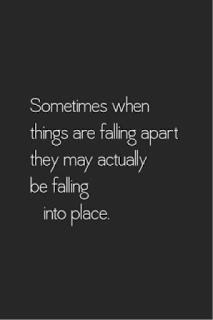
I so believe that God sent every obstacle our way as a test to see if this was truly the home of our dreams, the lifestyle we wanted, and were willing to do what we had to to make sure we got the home.If it weren't for God's strength and the many prayer chains I asked for through my church, I don't think I could have managed this chaotic experience.
I did have one relapse, putting me in the psychiatric ward for a week, but the driving force was panic, anxiety and PTSD triggers, than the actual problems with the seller and our inept loan officer. It didn't help, though.
Which leads us to the airplane. Greg really has his heart set on a particular plane. That was the driving force behind making this major decision in our life.
So, here it is, in all it's glory. I've even flown it.
 One minor detail, I don't know how to land for real.
One minor detail, I don't know how to land for real.
 I've seen it done a zillion times, and have done it with simulators, including with the Lear Jet simulator at the training center at Tucson International Airport. Now, that was some fun flight training.
I've seen it done a zillion times, and have done it with simulators, including with the Lear Jet simulator at the training center at Tucson International Airport. Now, that was some fun flight training.
But, as I said, I was never officially taught how to land a single engine plane. So, hubby has decided that I am going to take some lessons from one of his favorite instructors that is the best at teaching take offs and landings. Hubby is completely behind my request and decision to learn to fly in more detail and especially learn how to land. I won't be able to get my pilot's license, because I won't pass the medical requirements, but at least I can be the best co-pilot I can for my hubby.
Details, details.
Right?
But, we have conquered most of them. Especially, since, I've actually been writing this blog over the last few days. I started out before we closed and, guess what?
WE CLOSED YESTERDAY!!
 Finally. Now, we have to move our entire household by Wednesday. Of course, my hubby has some insane logic that he can get all moved (including furniture) with our neighbor's panel truck and some help from friends. As a matter of fact, he took the first load up today. The plane goes in the hanger today
Finally. Now, we have to move our entire household by Wednesday. Of course, my hubby has some insane logic that he can get all moved (including furniture) with our neighbor's panel truck and some help from friends. As a matter of fact, he took the first load up today. The plane goes in the hanger today
YAY!!
 I truly am believing now that we are going to move and start a new chapter in our lives.
I truly am believing now that we are going to move and start a new chapter in our lives.
Of course, after going up to the house early to do a walk through, before going back to Tampa, to do the closing paperwork, I was a knot of anxiety and panic. Afterwards, the release of it all, caused another panic and anxiety attack. Then hubby wanted to go to Home Depot, Lowes, and Best Buy to look at appliances. By the last store, I was completely beyond any intelligent conversation, nor did I have any decision making abilities left. Wasted. Exhausted. Checked out. I have to say that my faith and patience were tested in great detail over the last few months. We vacillated from wanting to buy the house, to staying here and not selling, to not buying the house and buying a vacant lot and building our own house, to cancelling everyone's contracts, to wanting to buy the house again.
Each time, I prayed and prayed for God to help guide us in the right direction and to show us the way.
 Prayer works.
Prayer works.
God never left us alone, and he never interfered without a darn good reason. Because we put this entire move into His hands, some obstacles were nearly insurmountable, but getting to the other side led to sweet rewards.
Now, in the next few days, we must say good-bye to this house that has been our home for eighteen years.
A great couple is buying it. He serves our country by working at MacDill Air Force Base. She is going to have their first child within days of us closing.
To accommodate them, we've moved up the closing as early as we could and still get everything out of this house and have all things installed at the new house. I truly enjoy this couple and am so happy we chose their bid over the other three we received.
Did I tell you the miracle?
We put our house on the market over Valentine's Day weekend. It was on the market for two days and we received four bids all over asking price.
Doesn't God work in mysterious ways?
I didn't want to go through weeks of showing the house. It would stress me and my dog. He had tot be boarded over that weekend we did show the house, as it would have been too much on him. It really hurt me, though, because one, we had strange people walking in and out of our house for those two days, and I couldn't have my dog, Jack around to help soothe me. If you've followed this blog, you know that Jack and I have a very deep connection. He's my therapy dog. I got him when he was ten weeks old and we bonded immediately. He is going to be thirteen this year.

I know that we are going to have to say good-bye to him soon. Hubby, at first, said after Jack, we would never have another dog again.
But, prior to closing, he told me that he realizes I need a companion dog for my therapy, and after we are settled in the new house, we are going to get another dog, young enough to learn from Jack everything required to be my companion.
Don't I have just the sweetest hubby in the whole world?
I know that God had our life mapped out before we were even born.
Sometimes, I can be stubborn and try to make my own path, but it takes a whack on the head from God to make me realize that it's His way or NO WAY.
 So, ultimately, I end up following God's plan, regardless. Sometimes, it takes a little more time to get there, as I sometimes don't follow the exact trail, but it eventually leads me back to the right track.
So, ultimately, I end up following God's plan, regardless. Sometimes, it takes a little more time to get there, as I sometimes don't follow the exact trail, but it eventually leads me back to the right track.
So, to sum up this blog post, it really does take a leap of faith to make things happen in your life.
In our new home, I'm getting a gorgeous office filled with huge windows so I'll have plenty of light and awesome views.
We are getting an amazing amount of land so I can have the gardens of my dreams.
And, most of all, I'll have my very happy hubby, his airplane, my dog, Jack, my parrot, Bailey and will have moved from one paradise to the other.
Thank you for following us on this journey, I appreciate you reading my post, and hearing the thunder outside reminds me I was supposed to pack up all my gardening tools and materials.
Have a blessed day.
Vicki
Copyright - Living Stone Faith. All Rights Reserved.
 Either, across the city, state, country, or continent. I've moved many times in my life. My last move was to the current house my husband and I have lived in for eighteen years. A long time. I thought this was our forever home. We are located in a older neighborhood with mature vegetation, trees, and the best thing is, if you ended up on our road, either you belonged there, or were lost. We live off a dead end, off a dead end, off a dead end. You couldn't try to find us if your life depended on it.
Either, across the city, state, country, or continent. I've moved many times in my life. My last move was to the current house my husband and I have lived in for eighteen years. A long time. I thought this was our forever home. We are located in a older neighborhood with mature vegetation, trees, and the best thing is, if you ended up on our road, either you belonged there, or were lost. We live off a dead end, off a dead end, off a dead end. You couldn't try to find us if your life depended on it.  We love this neighborhood. There are nineteen houses on our road. We live near the dead end. I know everyone who lives in eachhouse. There is the older couple (in their 80's now) who were the first people to build on this road, and the man used to mow the grass on the dirt road. His daughter lives next door with her husband.Our neighbors are a collection of young and old. When we first moved in eighteen years ago, it was mostly families. But, just like our kids, the other kids grew up and moved away. Then we were a predominantly older generation of neighbors. Now, grandchildren are coming back, and as the oldest neighbors either pass on, or move to assisted living facilities, the houses are now being filled with young families again.
We love this neighborhood. There are nineteen houses on our road. We live near the dead end. I know everyone who lives in eachhouse. There is the older couple (in their 80's now) who were the first people to build on this road, and the man used to mow the grass on the dirt road. His daughter lives next door with her husband.Our neighbors are a collection of young and old. When we first moved in eighteen years ago, it was mostly families. But, just like our kids, the other kids grew up and moved away. Then we were a predominantly older generation of neighbors. Now, grandchildren are coming back, and as the oldest neighbors either pass on, or move to assisted living facilities, the houses are now being filled with young families again.The Circle of Life.
As I said, I thought this was going to be our forever home, or if we ever did move, we'd move to something smaller and downsize.
Well, that ain't gonna happen.
Currently we are on 1/3 of an acre, with a single story three bedroom, two full bathrooms, great room, cedar throughout, including on the vaulted ceiling in the great room, and ceilings of the back patio and front patio. It's tiled throughout.The master bedroom closet is a woman's dream come true. I know, my husband designed it for me. We can't take it with us, as it was constructed to fit the dimensions of this closet. I'm really going to miss it.When we first moved in here, eighteen years ago, the kids were younger, so we made sure it had a pool. The kids are gone, I rarely get in, because it has to be over 80 degrees before I'll step foot in it. My husband used more, but, mostly we collect the leaves that drop and empty the skimmer. We did put a new sand filter on it.
 So, it was my husband's idea to move. Last year, he got his pilot's license. Since then, he's been eager to buy a plane. However, after insurance, hanger fees, etc, the cost is outrageous.
So, it was my husband's idea to move. Last year, he got his pilot's license. Since then, he's been eager to buy a plane. However, after insurance, hanger fees, etc, the cost is outrageous. So, he found this community about 40 miles north of us, in an airport community, where the runway goes down the center of the community, two roads on each side, that are used as taxi ways, so the pilots can taxi down the road to their house and park their plane in their own hanger.
So, we are now getting one acre of land. A 2500 square foot hanger. A three car garage, and two story home with three bedrooms, three full bathrooms, an office, a formal dining room, a laundry room (thank you, God!), and a loft. I think the total square feet is somewhere between 7,000 and 8,000 square feet. Dear God, way more than I can handle, so am going to be looking or a housekeeper! We did go back and forth for quite a while, trying to decide if we (me) really wanted to move. I was overwhelmed a bit about how big it all was, including a two story house.
Here's a really good aerial view of the house while we flew over it.

 This was my husband's dream ever since he was young. He has always wanted to fly his own airplane. As a kid and all through adulthood, he's flown Remote Control Airplanes and Helicopters.It was just never the same.
This was my husband's dream ever since he was young. He has always wanted to fly his own airplane. As a kid and all through adulthood, he's flown Remote Control Airplanes and Helicopters.It was just never the same. He alway thought he'd get a chance to go for his pilot license after he retired, but i felt that was too late. He needed to get his license and plane and enjoy it now, and not when we're all decrepit. Fifteen years ago, my wonderful hubby let me quit writing technical computer user manuals and turn to writing fiction full time. I have had twelve books published, I work as a writing coach, I give writing workshops and work as a freelance writer for other companies and websites.
Didn't he deserve the best opportunity as well?

Of course he did! He's an awesome person, My husband had faith and trust in me to follow my dream of writing, so he deserved my support to follow him with his dream
Of course, it is a win situation for me as well. I get an awesome new office, with huge windows with great views where I can store all my writing, research, and other books, along with all my files and author information. Including all the writing workshops I give, the writing coach information I have and the freelance work i do.
Best of all, I get to finish my Bipolar Memoir and I know it will be a great resource for those in need.
And I have an entire acre of land to create the gardens of my dreams, with stepping stones throughout. We've already told the buyers of our current home that we're digging up one of our Plumeria trees and taking it with us.
 We started out with about a six to eight inch cutting from a friend's Plumeria in the Florida Keys and planted it about 12 or so years ago. Now, it's been cut and trimmed too many times to count. I've given pieces away to neighbors. And it's still now three separate trees and blooms the most gorgeous yellow flowers. If you don't know what a Plumeria is, it's the flower in Hawaii that they use to create the leis. It can only grow in tropic areas. I'm hoping 40 miles north of us, will still be hospitable for the trees.
We started out with about a six to eight inch cutting from a friend's Plumeria in the Florida Keys and planted it about 12 or so years ago. Now, it's been cut and trimmed too many times to count. I've given pieces away to neighbors. And it's still now three separate trees and blooms the most gorgeous yellow flowers. If you don't know what a Plumeria is, it's the flower in Hawaii that they use to create the leis. It can only grow in tropic areas. I'm hoping 40 miles north of us, will still be hospitable for the trees. The house we bought was a foreclosure. The seller (Fannie Mae) had no vested interest in really helping us, or making the process easy for us. We used the VA loan I was eligible for, as I am a Veteran.
Easy peasy, right?
Are you kidding!! We are actually closing tomorrow, (updated, we closed yesterday, beyond any belief or trust I had in doing so), after over three months of sheer chaos. Fannie Mae and the VA don't get along anyway, so that was strike one against us. We started out with a loan processor who (lucky us) had never processed a loan before, we were her first. Strike two.
Third strike, as the house was a foreclosure, and Fannie Mae wasn't about to do anything to fix it up, besides painting the inside walls and putting down new carpet, we are responsible for buying and installing all appliances, installing two new air conditioning units, fixing the garage doors so they'll open, buy a new hot water heater, and the list goes on and on.

I so believe that God sent every obstacle our way as a test to see if this was truly the home of our dreams, the lifestyle we wanted, and were willing to do what we had to to make sure we got the home.If it weren't for God's strength and the many prayer chains I asked for through my church, I don't think I could have managed this chaotic experience.
I did have one relapse, putting me in the psychiatric ward for a week, but the driving force was panic, anxiety and PTSD triggers, than the actual problems with the seller and our inept loan officer. It didn't help, though.
Which leads us to the airplane. Greg really has his heart set on a particular plane. That was the driving force behind making this major decision in our life.
So, here it is, in all it's glory. I've even flown it.
 One minor detail, I don't know how to land for real.
One minor detail, I don't know how to land for real.  I've seen it done a zillion times, and have done it with simulators, including with the Lear Jet simulator at the training center at Tucson International Airport. Now, that was some fun flight training.
I've seen it done a zillion times, and have done it with simulators, including with the Lear Jet simulator at the training center at Tucson International Airport. Now, that was some fun flight training. But, as I said, I was never officially taught how to land a single engine plane. So, hubby has decided that I am going to take some lessons from one of his favorite instructors that is the best at teaching take offs and landings. Hubby is completely behind my request and decision to learn to fly in more detail and especially learn how to land. I won't be able to get my pilot's license, because I won't pass the medical requirements, but at least I can be the best co-pilot I can for my hubby.
Details, details.
Right?
But, we have conquered most of them. Especially, since, I've actually been writing this blog over the last few days. I started out before we closed and, guess what?
WE CLOSED YESTERDAY!!
 Finally. Now, we have to move our entire household by Wednesday. Of course, my hubby has some insane logic that he can get all moved (including furniture) with our neighbor's panel truck and some help from friends. As a matter of fact, he took the first load up today. The plane goes in the hanger today
Finally. Now, we have to move our entire household by Wednesday. Of course, my hubby has some insane logic that he can get all moved (including furniture) with our neighbor's panel truck and some help from friends. As a matter of fact, he took the first load up today. The plane goes in the hanger today YAY!!
 I truly am believing now that we are going to move and start a new chapter in our lives.
I truly am believing now that we are going to move and start a new chapter in our lives.Of course, after going up to the house early to do a walk through, before going back to Tampa, to do the closing paperwork, I was a knot of anxiety and panic. Afterwards, the release of it all, caused another panic and anxiety attack. Then hubby wanted to go to Home Depot, Lowes, and Best Buy to look at appliances. By the last store, I was completely beyond any intelligent conversation, nor did I have any decision making abilities left. Wasted. Exhausted. Checked out. I have to say that my faith and patience were tested in great detail over the last few months. We vacillated from wanting to buy the house, to staying here and not selling, to not buying the house and buying a vacant lot and building our own house, to cancelling everyone's contracts, to wanting to buy the house again.
Each time, I prayed and prayed for God to help guide us in the right direction and to show us the way.
 Prayer works.
Prayer works. God never left us alone, and he never interfered without a darn good reason. Because we put this entire move into His hands, some obstacles were nearly insurmountable, but getting to the other side led to sweet rewards.
Now, in the next few days, we must say good-bye to this house that has been our home for eighteen years.
A great couple is buying it. He serves our country by working at MacDill Air Force Base. She is going to have their first child within days of us closing.
To accommodate them, we've moved up the closing as early as we could and still get everything out of this house and have all things installed at the new house. I truly enjoy this couple and am so happy we chose their bid over the other three we received.
Did I tell you the miracle?
We put our house on the market over Valentine's Day weekend. It was on the market for two days and we received four bids all over asking price.
Doesn't God work in mysterious ways?
I didn't want to go through weeks of showing the house. It would stress me and my dog. He had tot be boarded over that weekend we did show the house, as it would have been too much on him. It really hurt me, though, because one, we had strange people walking in and out of our house for those two days, and I couldn't have my dog, Jack around to help soothe me. If you've followed this blog, you know that Jack and I have a very deep connection. He's my therapy dog. I got him when he was ten weeks old and we bonded immediately. He is going to be thirteen this year.

I know that we are going to have to say good-bye to him soon. Hubby, at first, said after Jack, we would never have another dog again.
But, prior to closing, he told me that he realizes I need a companion dog for my therapy, and after we are settled in the new house, we are going to get another dog, young enough to learn from Jack everything required to be my companion.
Don't I have just the sweetest hubby in the whole world?
I know that God had our life mapped out before we were even born.
Sometimes, I can be stubborn and try to make my own path, but it takes a whack on the head from God to make me realize that it's His way or NO WAY.
 So, ultimately, I end up following God's plan, regardless. Sometimes, it takes a little more time to get there, as I sometimes don't follow the exact trail, but it eventually leads me back to the right track.
So, ultimately, I end up following God's plan, regardless. Sometimes, it takes a little more time to get there, as I sometimes don't follow the exact trail, but it eventually leads me back to the right track. So, to sum up this blog post, it really does take a leap of faith to make things happen in your life.
In our new home, I'm getting a gorgeous office filled with huge windows so I'll have plenty of light and awesome views.
We are getting an amazing amount of land so I can have the gardens of my dreams.
And, most of all, I'll have my very happy hubby, his airplane, my dog, Jack, my parrot, Bailey and will have moved from one paradise to the other.
Thank you for following us on this journey, I appreciate you reading my post, and hearing the thunder outside reminds me I was supposed to pack up all my gardening tools and materials.
Have a blessed day.
Vicki
Copyright - Living Stone Faith. All Rights Reserved.
Published on March 19, 2016 09:31
January 31, 2016
Mental Health Series - PTSD (Post Traumatic Stress Disorder)
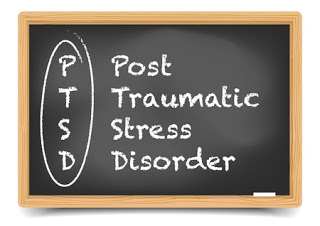 Post-Traumatic Stress Disorder (PTSD) Recently I went through a PTSD crisis. It occurred because of a trigger that happened several weeks ago. A couple of days after that trigger, another trigger occurred. Then, a couple of days later, another trigger occurred. They weren't monumental triggers like having the same traumatic event happen. They were triggers of telling the event in various ways and talking about it to fill out some disability paperwork. Then the next trigger was a personal lesson during bible study. The third trigger was just a discussion on forgiveness. Just a simple word and a simple non-related discussion.However, each event built upon the other causing very serious symptoms in me. I became anxious, increasingly emotional, flashbacks, nightmares, insomnia, loss of desire to be with others, lack of ability to concentrate on activities, and eventually a series of panic attacks that escalated throughout the two weeks I attempted to cope with it on my own, until I ended up in the psychiatric ward of the hospital for intense, immediate and safe treatment. Especially, because I started having suicidal thoughts.I'm out of the hospital now, but I'm not "cured." I'm not over the PTSD crisis. It's still there. But, I'm better able to cope because of the skills I learned while hospitalized, the addition of a mood stabilizer, and a medication to help me sleep. All of these combined, still do not make the PTSD crisis go away. I still need to work with my psychiatrist and my therapist to develop a treatment plan. Hopefully, this plan will include EMDR therapy. I've had EMDR therapy before, but it was nearly six years ago. Because the of the intensity of the triggers, I believe another session is required.
Post-Traumatic Stress Disorder (PTSD) Recently I went through a PTSD crisis. It occurred because of a trigger that happened several weeks ago. A couple of days after that trigger, another trigger occurred. Then, a couple of days later, another trigger occurred. They weren't monumental triggers like having the same traumatic event happen. They were triggers of telling the event in various ways and talking about it to fill out some disability paperwork. Then the next trigger was a personal lesson during bible study. The third trigger was just a discussion on forgiveness. Just a simple word and a simple non-related discussion.However, each event built upon the other causing very serious symptoms in me. I became anxious, increasingly emotional, flashbacks, nightmares, insomnia, loss of desire to be with others, lack of ability to concentrate on activities, and eventually a series of panic attacks that escalated throughout the two weeks I attempted to cope with it on my own, until I ended up in the psychiatric ward of the hospital for intense, immediate and safe treatment. Especially, because I started having suicidal thoughts.I'm out of the hospital now, but I'm not "cured." I'm not over the PTSD crisis. It's still there. But, I'm better able to cope because of the skills I learned while hospitalized, the addition of a mood stabilizer, and a medication to help me sleep. All of these combined, still do not make the PTSD crisis go away. I still need to work with my psychiatrist and my therapist to develop a treatment plan. Hopefully, this plan will include EMDR therapy. I've had EMDR therapy before, but it was nearly six years ago. Because the of the intensity of the triggers, I believe another session is required. When someone is feeling threatened, a “flight or fight” response is triggered that protects them from harm. However, in someone with PTSD, the “flight or fight” response is changed or damaged in some way. Someone with PTSD can feel stressed or frightened even when there is no threat of danger.
How does PTSD develop?
PTSD usually develops after a terrifying, horrific ordeal that either involved physical harm or the threat of physical harm. Usually the person who develops PTSD may have been the one to be harmed, or the harm could have happened to a loved one, or the person who develops PTSD could have witnessed a harmful event that happened to a loved one or even to strangers. These result in the person developing Fear Memories.
Even though PTSD was first brought to the public’s attention by war veterans, PTSD can result from a variety of traumatic events: assault, muggings, rape, torture, kidnapped, held captive, child abuse (physical/sexual), childhood neglect, sudden death of a loved one, car accidents, train wrecks, plane crashes, terrorist attacks, bombings, or some kind of natural disaster such as flood or earthquake.
The person involved in the event can develop PTSD or other people can be affected who have to pick up the pieces of the tragic event afterwards such as: emergency workers, law enforcement officers, friends, and/ or family.
PTSD development varies from person to person. Symptoms can occur within hours or days of an event, it can sometimes take weeks, months, or even years before the symptoms actually appear.
How are Fear Memories created?
Scientists are currently working on studying genes that play a role in creating fear memories. Like other mental disorders, it is likely many genes with small effects are at work in PTSD: (Stathmin, GRP, 5-HTTLPR)
What are the causes of PTSD?
While scientists study the brain and fear and stress to determine the causes of PTSD, environmental factors are also considered: childhood trauma, head injury, or a history or mental illness.
How common is PTSD?
Although it’s been said that any of us can suffer from PTSD given the right circumstances, it’s estimated that approximately 5% of men and 10% of women suffer from PTSD at some point in their lives.
What are the signs or symptoms of PTSD?
PTSD can cause many symptoms. These symptoms are grouped in three categories:
1. Re-experiencing Symptoms
2. Avoidance and Numbing Symptoms
3. Increased Anxiety and Emotional Arousal Symptoms
What symptoms do the three categories have?
1. Re-Experiencing the Traumatic Event
Intrusive, upsetting memories of the event Flashbacks, (acting or feeling like the event is happening again) Nightmares (either of the event or of other frightening things) Feelings of intense distress when reminded of the event Intense physical reactions to reminders of the event (such as: pounding heart, rapid breathing, nausea, muscle tension, sweating)
2. Avoidance and Numbing
Avoiding activities, places, thoughts, or feelings that remind you of the trauma Inability to remember important aspects of the trauma Loss of interest in activities and life in general Feeling detached from others and emotionally numb Sense of limited future (you don’t expect to live a normal life span, get married, have a career)
3. Increased Anxiety and Emotional Arousal
Difficulty falling or staying asleep Irritability or outbursts of anger Difficulty concentrating Hyper-vigilance (on constant “red alert”) Feeling jumpy and easily startled
Other common symptoms of PTSD include: anger and irritability, guilt, shame, or self-shame, substance abuse, feelings of mistrust and betrayal, depression and hopelessness, suicidal thoughts and feelings, feeling alienated and alone, and physical aches and pains.
Who is at risk for PTSD?
Although it’s impossible to predict who will develop PTSD in response to any trauma in their life, there are certain risk factors that can increase your vulnerability.
Previous traumatic experiences, especially in early life Family history of PTSD or depression History of physical or sexual abuse History of substance abuse History of depression, anxiety, or another mental illness High level of stress in every day life Lack of support after the trauma Lack of coping skills
What are the treatments for PTSD?
Education plays a big part of treating others for Post-Traumatic Stress Disorder (PTSD). It helps to provide information about the illness to help the person manage their symptoms. Psychological and medical help is also given to those with PTSD. When receiving education about PTSD, the person who suffers from PTSD will learn about others, their traumas, and that it is caused by stress rather than weakness in the person involved.
Cognitive Behavioral Therapy is an important part of using therapy to help those with PTSD. This many even be combined with group therapy. It helps people who suffer from PTSD to recognize and adjust their trauma-related thoughts.
Eye-Movement Desensitization and Reprocessing (EMDR), a form of cognitive therapy, has been found to be extremely successful in helping those with PTSD. It works by the person with PTSD talking about the trauma they suffered and the negative feelings they associate with the event, while focusing on a rapidly moving object or a tone while wearing headphones.
Medications are also helpful. They help the various environmental and/or physical symptoms demonstrated by the person with PTSD, such as serotonergic antidepressants. Other medications such as mood stabilizers and antipsychotics have also been found to be helpful.
Those with PTSD who maintain their medical regime are less likely to experience a relapse of their illness if the antidepressant treatment is continued for at least a year.
When should someone who suspects PTSD see a doctor?
If symptoms occur for more than a month, it may mean the person is suffering from PTSD. It doesn’t necessarily mean you have PTSD if you’ve experienced a traumatic event and suffered some occasional fear and anxiety, lack of concentration, sadness or changes in sleeping or eating habits, or even bouts of crying. However, if the symptoms are severe enough to impede the person’s ability to get back to a normal life he / she should see a medical professional. If the symptoms are so strong that someone in the person’s life such as a friend or family member feel that they may harm themselves, seek medical attention immediately.
I should have let my psychiatrist and therapist know immediately how severely affected I was due to the PTSD triggers. It's possible, the right treatment could have been started immediately, thus, avoiding an Emergency trip to the hospital resulting in hospitalization.
I beg you. If you or someone you know experiences anything like what I've described here in this article, please seek professional help immediately. Don't wait. It only makes the situation worse.
Image Copyright: unkreatives / 123RF Stock PhotoCopyright - Living Stone Faith. All Rights Reserved.
Published on January 31, 2016 10:16
January 17, 2016
Mental Health Series - Eating Disorders
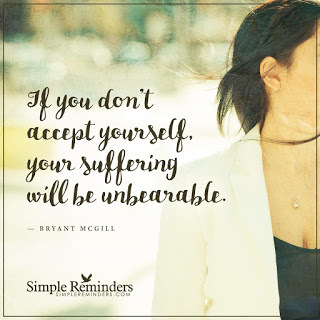 Having an Eating Disorder is a serious illness that causes abnormal disruptions to a person’s every day nutrition intake to the detriment of a person’s physical or mental health. These disruptions could be anything from eating small amounts of food to severely overeating. A person with an Eating Disorder can be concerned about body weight or shape to the point of it causing severe distress. The most common Eating Disorders are: anorexia nervosa, bulimia nervosa, and binge-eating disorder.
Having an Eating Disorder is a serious illness that causes abnormal disruptions to a person’s every day nutrition intake to the detriment of a person’s physical or mental health. These disruptions could be anything from eating small amounts of food to severely overeating. A person with an Eating Disorder can be concerned about body weight or shape to the point of it causing severe distress. The most common Eating Disorders are: anorexia nervosa, bulimia nervosa, and binge-eating disorder.In the United States, 20 million women and 10 million men suffer from some type of eating disorder in their lifetime. Eating disorders can be deadly. Up to 20 percent of people with anorexia die from their disorder, making it the deadliest mental illness there is. What Causes an Eating Disorder?According to the National Institute of Mental Health, “Researchers are finding that Eating Disorders are caused by a complex interaction of genetic, biological, behavioral, psychological, and social factors.” Many people with eating disorders also suffer from body dysmorphic disorder, which alters the way people see themself. Social idealisms of thinness and youthfulness have contributed to eating disorders affecting various people. One study showed that girls with ADHD have a greater chance of getting an eating disorder than those not affected by ADHD. Types of Eating Disorders
Anorexia Nervosa (AN)Not maintaining a healthy body weight, an obsessive fear of gaining weight or refusal to do so, and an unrealistic perception, or non-recognition of the seriousness, of current low body weight, characterizes this disorder. Anorexia can cause menstruation to stop, and often leads to bone loss, loss of skin integrity, etc. It greatly stresses the heart, increasing the risk of heart attacks and related heart problems. The risk of death is very high in individuals with this disease.
Typical Symptoms of Anorexia Nervosa Severe Symptoms of Anorexia Nervosa Bulimia Nervosa (BN)Recurrent or frequent binge eating followed by compensating behaviors such as purging (self-induced vomiting, excessive use of laxatives/diuretics, or excessive exercise) characterizes this disorder. Fasting and / or excessive exercise may also be used as a method of purging following a binge-eating episode.
Typical Symptoms of Bulimia Nervosa Binge Eating Disorder (BED)More common than either Bulimia or Anorexia, Binge eating at least 2-3 times a week without compensating behavior characterizes this disorder. The disorder can develop within people of a wide range of ages and social and economic classes. People with Binge Eating Disorder are often overweight or obese.
Typical Symptoms of Binge Eating Disorder Consequences of Binge Eating Other Specified Feeding or Eating Disorder (OSFED)An eating or feeding disorder that does not meet the DSM-5 criteria for AN, BN, or BED characterizes this disorder. Examples of otherwise-specified eating disorders include individuals with atypical anorexia nervosa, who meet all criteria for AN except being underweight, despite substantial weight loss; atypical bulimia nervosa, who meet all criteria for BN except that bulimic behaviors are less frequent or have not been ongoing for long enough; purging disorder; and night eating syndrome.
Treatment OptionsThe fundamentals of treatment are adequate nutrition, reducing excessive exercise and stopping purging behaviors.
Some forms of psychotherapy or talk therapy and medications have been known to be effective with eating disorders. Usually treatment plans are modified to the person’s needs and may include one or more of the following:· Individual, group, and / or family psychotherapy· Medical care and monitoring· Nutritional counseling· Medications
Recovery from an eating disorder is difficult and it takes a lot of time and hard work. It takes professional help, including medical care, psychotherapy, and nutritional counseling, as well as support from friends, family members, and other people with eating disorders.
Image courtesy of Simple Reminders
Copyright - Living Stone Faith. All Rights Reserved.
Published on January 17, 2016 23:00
January 10, 2016
Mental Heath Series - Weight Loss / Eating Disorder Issues
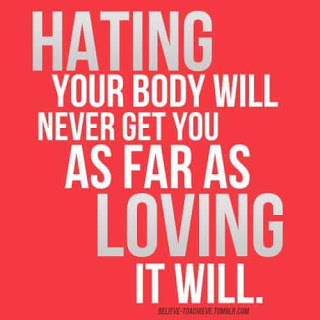 Making a change in your life, like losing weight, is not so much about the actual pounds you want to lose, but the change you are making in your life. Your attitude must be positive and you must believe in a positive outcome.
Making a change in your life, like losing weight, is not so much about the actual pounds you want to lose, but the change you are making in your life. Your attitude must be positive and you must believe in a positive outcome.It’s much easier in the long run, to stick to a weight loss program if you have support. That support can come from your family, friends, commercial programs, clinics, behavior modification programs, and social support.
What helps is having the motivation to continue every day with the weight loss goals you’ve set for yourself. Always give yourself a reason why you can accomplish your goals.
It’s been said that no one is perfect. You don’t have to aim to be perfect, either. Just give yourself permission to be a little better today than you were yesterday.
Failure is not an option, and shouldn’t be for you either. One of the easiest ways to lose weight is to start walking. Walk in front of your house. Walk the length of your street. Walk one half a mile. Walk only what you are capable of and then walk a little further. Personally, I lost over 100 pounds just by walking. I started out walking less than one half a mile. I progressed every week, walking a little bit more, and a little bit more, until after a year, I was walking a mile or more. Then by the next year I was walking a few more miles. By the end of the third year I was walking eight miles a day. That’s all I did to change my lifestyle and lose weight.
Someone once said, “Success is not a place that we aspire to, it is a process in which we live by. Often the only ingredient being the ability to not quit.” That’s where you need to dig deep into your soul and know in your heart that this is truly a change you want to make in your life.
Keeping a food journal helps. Writing down everything that you eat, or the calories, or the amounts, whatever you want to track, will help you stay on that road to success.
Keeping a progress journal will also help. Write out your feelings, your successes, your frustrations, your emotions, and get them out of your head and onto paper. Give yourself the opportunity to reveal, in a journal, even if to n o on else, exactly what you’re experiencing as you go through this life change.
Buddy up with another person who wants to make the same changes in their life. It always helps to have someone you can motivate and who can give you the inspiration you need when you’re feeling like you can’t go on.
An Ashanti Proverb goes like this; you must act as if it is impossible to fail. Have faith. Believe with all your heart. Give yourself over to the change and live it, day by day.
In future issues, I'll discuss more about weight loss and eating disorders. Weight loss does not equal healthy eating, nor does being thin. Weight is just a number, diets are not recommended, a lifestyle choice is better.
If you read previous posts, you'll find out about my struggle with a Binge Eating Disorder and how I've coped.
Copyright - Living Stone Faith. All Rights Reserved.
Published on January 10, 2016 23:00
January 3, 2016
Mental Health Series - Veteran Support
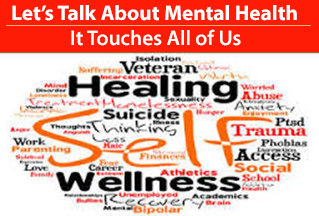 Veteran Support is an important aspect of Mental Health. Many veterans come back from serving their country with physical and mental issues. Many veterans don't even understand what is happening to them. Or, they don't want to admit what is happening and don't seek the help they need.
Veteran Support is an important aspect of Mental Health. Many veterans come back from serving their country with physical and mental issues. Many veterans don't even understand what is happening to them. Or, they don't want to admit what is happening and don't seek the help they need. Transiting from the armed forces to civilian life may not be as easy as it could be for some people. Some Veterans need some support to help them find their way in the civilian world. There are resources for that in your community and on the Internet.
You may need to find a job, find a place to live, or even find health care to help you in your time of need.
Veterans perform a job with the military that can reflect no other. Their courage, strength, and fortitude are matchless. We must not forget the sacrifices they and their families made while they were serving our country.
One of the first places someone can turn to is the Department of Veteran Affairs. Not only will they help you establish your GI Bill, if need be, but they can help you with establishing a VA loan for housing and obtaining medical benefits.
Not every veteran who returns from a tour in the military finds their footing. There are organizations and community resources to give you a step up and a helping hand, if necessary.
Post Traumatic Stress Disorder (PTSD) is a serious disorder afflicting many of our veterans. It’s a serious, silent illness that can keep a person from pursing the happier moments of being home and among family. There is support for PTSD as well in the form of therapy, counseling, and hospitalization depending on the severity.
Things that a newly returning veteran can do are establishing a routine. Don’t become complacent or discontent with your situation. Work to make a change for the better. If you need to find a job, look for one in the local papers, use your network with the VA, and join community services that help you locate employment.
If finding a place to live is your priority, you can do that as well. Use your VA resources, your ability to purchase a home with a VA loan, and other resources available in your community to locate housing.
If healthcare is your priority, you can definitely use the VA resources to find medical care at a Veterans Hospital or clinic. If one isn’t currently available in your area, contact the Department of Veteran Affairs to find the one closest to your area.
It’s important to stay positive and upbeat. You are a survivor. You are a hero. You are confident and strong. Use the help of family and friends to establish your civilian life and before you know it, you’ll be telling stories of the time you were in the military to your friends over a nice barbeque in your new backyard.
You can always find support from your local church and if you aren't going to church, finding one can go a long way to recovery. Prayer works. God will not forsake you.
Another way to help yourself is to put your thoughts in writing. Creating a journal can help you work through issues that you may not be able to vocalize. Once you find a therapist, you can either share what you've written, or work on creating other forms of writing/journaling that can help you recover. Copyright - Living Stone Faith. All Rights Reserved.
Published on January 03, 2016 23:00
December 30, 2015
Reflections of the Last Year and Preparing for the New Year
 It's been one of those years. You know what I mean, where it seems like one thing after another occurs, and you just can't seem to catch your breath between incidents.
It's been one of those years. You know what I mean, where it seems like one thing after another occurs, and you just can't seem to catch your breath between incidents.Let's recap 2015, physically and mentally. I started out the year with ECT treatments for medication resistant depression and then a psychiatric hospitalization.
Then, I had a series of low back pain injections, due to a continuing low back problem. I had a major fatigue illness that kept me from doing much of anything, including walking my dog for months. I even had a series of IV infusions that were supposed to help me regain my strength. That did help, after awhile.
I knew I couldn't keep up the rate of work I'd been doing before with running several businesses, giving writing workshops, participating on the Board of Directors for Florida Writers Association, blogging, editing and proofreading others work, and freelance writing. Along with taking classes to become certified to teach journal therapy, I was stretched mentally and physically. This could have led to the energy collapse.
So, I chose to concentrate on getting myself well. I resigned from the FWA board of directors, closed my businesses, and stopped freelance writing. I stopped taking journal therapy classes and the weight of it all felt great. I knew my priorities had changed and I now wanted to not only concentrate on getting myself well, but helping others in a more one on one capacity with their writing and with opening up about mental issues. I wanted and did become an advocate for Mental Health.
I even wrote a book titled, "Writing Heals" that gives others an opportunity to discover traumatic issues that had been holding them back, learning to accept them, cope with them, and using writing to overcome them and live a life of joy.
This gave me the strength I needed to schedule my yearly trip to see my kids and grandkids, without fear of flying or travel, or leaving my home. I'd become my own version of my book.
I did have a wonderful time visiting my kids and grandkids in Arizona. My husband even went, giving us some wonderful quality time with everyone.
Then, coming back, I got the news from my Optometrist that I needed immediate Cataract surgery, after a year's determination that my eyes had deteriorated to the point that corrective lenses were no longer available. Going through Cataract surgery for both eyes and then discovering that the healing process brought on Posterior Capsulotomy (a film grew over my new lenses, causing a cloudy view, blurring, halos, etc.) The eye surgeon, Dr. Newsom, said that it sometimes occurs in "younger" patients, when they heal too quickly. So, I then had to have 2 more procedures on my eyes, to remove that issue.
In the mean time, I was having major GI issues, that ended up with me in the ER, then admitted into the hospital for a series of tests that resulted in a diagnosis of Colitis and Diverticulitis. The Colitis continues to flare up and is not under control yet. While I went through that, I had a black out while walking on the sidewalk behind my husband, that resulted in another trip to the ER to discover that there wasn't anything apparent to cause the blackout but resulted in various bumps, bruises, a chipped tooth, sprained wrist, and broken elbow.
Yay.
And, the year wasn't over yet. I couldn't keep the incidents straight, they were happening so fast. The next thing I know, I'm in the ER again, with muscle spasms in my low back, so severe I couldn't walk, stand, sit, nothing. The pain was so severe, I called my neighbor to take me to the hospital, where after seven hours they sent me home with medication for muscle spasms and pain and an order for a week of bed rest. This meant I was in bed through the week before and during Christmas. I couldn't even decorate for Christmas, which actually ended up as a good thing, which I'll describe below.
Some of the good things that resulted were helping my husband fulfill his life long dream of getting a pilot's license. He'd been a remote control airplane and helicopter enthusiast his entire life. He'd longed to actually fly airplanes, eventually flying helicopters. So, I decided to help my husband by putting all our efforts toward this goal, including giving up a lot of of our free time with him.
One of the best things that happened was in June, when I opened up to my husband, myself, and my doctors about a 50 year old secret that I'd been keeping. I had an eating disorder. A binge eating disorder. I started seeing a new therapist who brought old insecurities and past traumas to light that helped me understand that by keeping the secret I was actually harming myself more. By, facing it, facing old life traumas, and understanding guilt ridden ideologies, I actually found myself letting go of past control issues and taking charge of my life choices, I finally understood that no one had control of my food issues. Only I could make the choices that resulted in a new pattern of lifestyle thoughts and choices that made me feel better about myself and let go of the guilt I had for so long.
I was able to apply my faith and love of God and His word to help me get through. I was able to let go of the obsessive control I had let others have and discover that I could leave the stigma of weight and food to others and not let them affect me.
I now have a more positive attitude toward food, myself, health and now have an even healthier relationship with nutrition and my body.
I now know that weight loss does not equal healthy eating or recovering from Binge Eating Disorder, and being thin does not equal happiness or health.
I am taking it one day at a time.
Best of all, I've learned better coping skills for Bipolar Disorder, Social Anxiety, General Anxiety, OCD, and PTSD. Skills that don't require psychotropic medications. My psychiatrist was in full support and helped me drop one medication after another.
Because of this, I've found that after eighteen years in the same house, where at one time I was so agoraphobic I couldn't leave my own home, I'm ready to move onto a new path in my life. A life that surrounds my husband's desire to fly and live in a community further away from the city and has its own airport. So, we are. We are moving to a community with its own airport and each house has its own hanger for an airplane.
I'm not even freaking out about it. I think the move will be a wonderful way to start 2016.
Although, when my husband and I thought about moving from our current home, we thought we'd be downsizing and thinning out our possessions. This new home is bigger than the one we have, it's on more land, and if you add the hanger space, three car garage space, and home space, it's more than three times of living space than we have now.
So, that's been my life this past year. Good and bad. Each event led me to a revelation about myself and my life's priorities.
And, my first commitment to myself is to give myself permission to change the direction of the memoir I'd struggled to write for the past year or so, and write with a passion for helping others. That makes me very happy.
I'm also going to make a commitment to increase my physical activity, as the community we are moving to gives Jack (my American Eskimo dog) and me more areas to walk, without getting near a major road.
I'll continue my therapy work on Binge Eating Disorder, reinforcing new techniques to help me be more mindful of my eating habits and choices.
And, I'll work with other writers, giving them of my time and knowledge, to help them become the best writer they can be and help them achieve their writing goals.
I have a wedding to look forward to, as my son is getting married to the love of his life and that could mean more grandchildren on the horizon. (yay!)
Finally, I'll continue my work learning as much as I can about the Bible and Christian History so that I can not only answer my questions, but give me a further perspective about my relationship with God.
The best thing is, with my progress with Bipolar Disorder and other mental issues, I am going to help as a Mental Health Advocate by reducing stigma and increasing knowledge for those who want to learn.
That's it. That's been my 2015 life, and my feelings about my future for 2016. Am I going to make a resolution? Doubtful. I don't think they are necessary and I'd rather work on improving myself physically, emotionally, mentally, and personally with positive affirmations, thoughts, and actions.
I hope that you had an enlightened 2015 and that you can look forward to 2016 without making unnecessary or unachievable resolutions.
Be kind to yourself and to others. Follow Jesus' commandments to love God and one another.
Finally, brothers and sisters, whatever is true, whatever is noble, whatever is right, whatever is pure, whatever is lovely, whatever is admirable -- if anything is excellent or praiseworthy -- think about such things. -- Philippians 4:8
Turn your thoughts to positive things, as urged by Paul. Make a conscious effort to think gentler, more noble thoughts. Replace all of your bad thoughts with kinder, love-filled thoughts, reducing stress and increasing your peace. Before long, you'll re-train your brain to naturally turn to truth, purity and excellence.
Happy New Year!
Vicki
P.S. I hope you are enjoying my series on Mental Health. If you have any suggestions for a topic, please let me know.
Copyright - Living Stone Faith. All Rights Reserved.
Published on December 30, 2015 11:32



